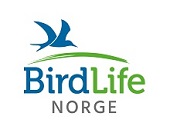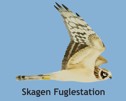
|
|
Grey-necked bunting (Emberiza buchanani) The grey-necked bunting is a new species for Norway and was seen at Lista on the 10th of August 2011. Grey-necked bunting at Lista - a new species for Norway!
By M. Wold Geir Birkeland, who newly moved from Kristiansand to Lista, discovered the bird on his very first walk around the area. It was first thought to be an ortulan bunting (Emberiza hortulana), a relatively rare species that we see around the bird observatory 1-2 times a year. The bird was found again the next day by Ole Skimmeland, and in later in the afternoon the same day Vegard Bunes could determine that it is a grey-necked bunting (Emberiza buchanani). The grey-necked bunting is similar to the ortulan bunting, but there are several characteristics to separate the two. The red colour goes further up the front on the grey-necked bunting, and it also has a characteristic red/pink bill, and a white ring around the eye. In contrast to the ortulan, the grey-necked bunting is not very shy, and the bird down at Gunnarsmyra hops around seemingly unaffected by all the birders, looking for insects and seeds in the gravel. The grey-necked bunting breeds East of the Caspian sea, all the way into Central Asia, and winters in India. It lives at high altitudes with sparse vegetation, and was possibly taken to Norway by Easterly winds. The bird has been stationary at Lista for at least a couple of days, and many people have come to take a look. Throughout the weekend, we expect more birders to arrive to take part in the experience. | |||||

| Ringing numbers | ||||
|
| Reportasje fra Lista FS i Aftenposten |

|
| Seasonal deviation | ||||||||||||||||||||||||||||||
|
|
Følg Følg Lista FS på facebook.com |
| Siste 5 på siden |
|
Begynnerkurs i ringmerking: 17.-18. august The annual report for 2023 is available! Fuglefestival 2.-3. september Report from spring 2023 Ny rapport: Måling av elektromagnetiske feltstyrke fra fugleradar ved Lista fyr. |
| Nyheter fra NOF |
|
Ankerfjella IBA trues av... Kraftlinjer og vindmøller... Lille måltrost og den enda... Fine hekkeflåter til ternene... Statsforvalteren sier nei til... Hotell i særklasse Tusenvis av svarttrost: Hvor... Kulturlandskapsarten... |
Lista Fuglestasjon
Fyrveien 6
NO-4563 Borhaug
post@listafuglestasjon.no Tlf: 949 86 793
 |  |


 Only in English
Only in English



